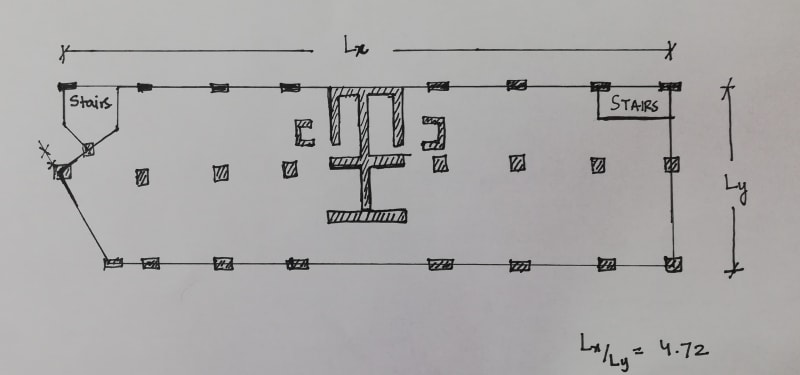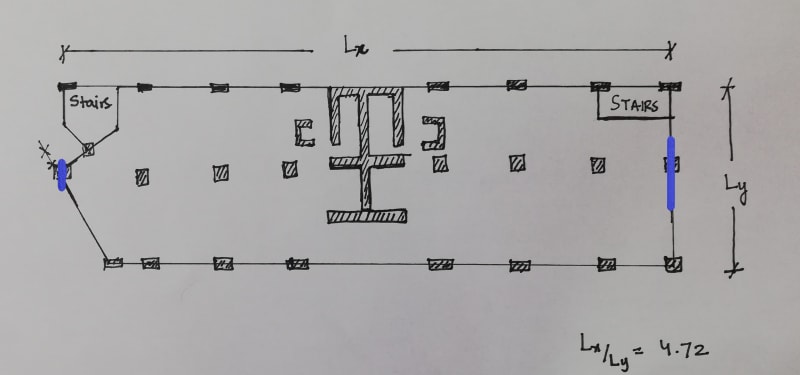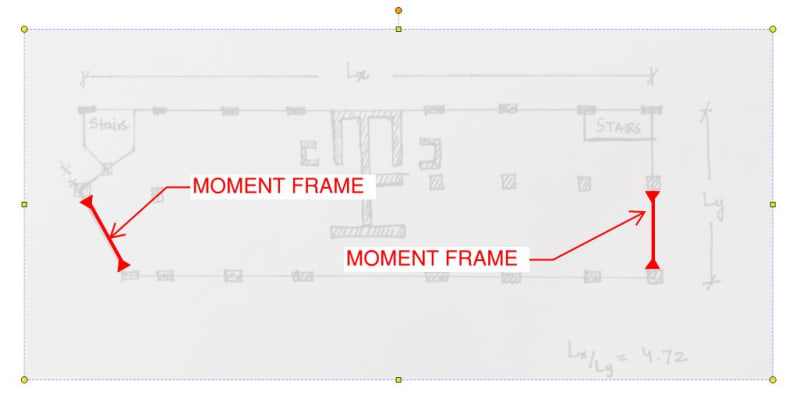Usman3301
Civil/Environmental
- Jul 11, 2019
- 48
Hi there,
I am currently working on a 20+ story building (For educational purpose only) having dual resisting system (Moment resisting frames and concrete shear walls located in center). I intend to perform Non-Linear Static Pushover Analysis to capture non-linear response of the structure and to study Demand/Capacity ratios for in-elastic response of structure. However, when I performed Response Spectrum analysis, I got 1st mode of vibration as "Torsional mode", which doesn't make sense to me. Story-drifts are restricted as per code's limitations. Also Torsional irregularity checks are also okay (Considering eccentricity between center of mass and center of rigidity). Base shear for both, Equivalent Lateral Force Procedure and Response spectrum analysis also matches (approximately equal).
Since, Pushover analysis is applicable to structures whose response is dominated by its first mode of vibration (Which isn't the case here), although my first mode appears to be in rotation, my gut feeling says its translational. I am attaching Modal participating ratios, any sort of help is appreciated.

I am currently working on a 20+ story building (For educational purpose only) having dual resisting system (Moment resisting frames and concrete shear walls located in center). I intend to perform Non-Linear Static Pushover Analysis to capture non-linear response of the structure and to study Demand/Capacity ratios for in-elastic response of structure. However, when I performed Response Spectrum analysis, I got 1st mode of vibration as "Torsional mode", which doesn't make sense to me. Story-drifts are restricted as per code's limitations. Also Torsional irregularity checks are also okay (Considering eccentricity between center of mass and center of rigidity). Base shear for both, Equivalent Lateral Force Procedure and Response spectrum analysis also matches (approximately equal).
Since, Pushover analysis is applicable to structures whose response is dominated by its first mode of vibration (Which isn't the case here), although my first mode appears to be in rotation, my gut feeling says its translational. I am attaching Modal participating ratios, any sort of help is appreciated.








